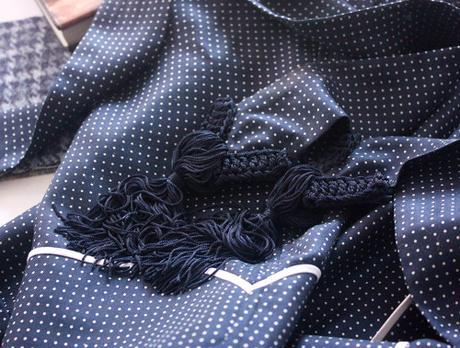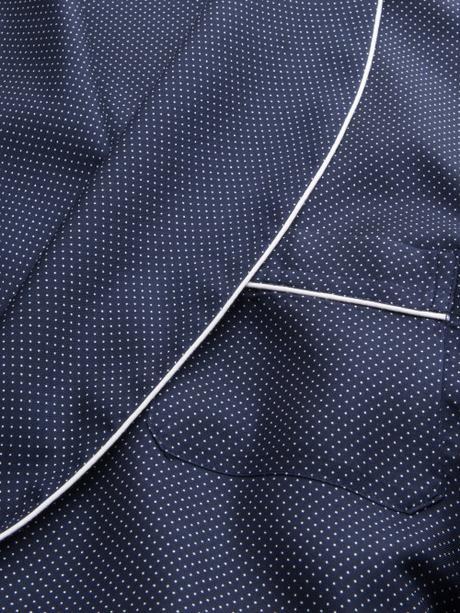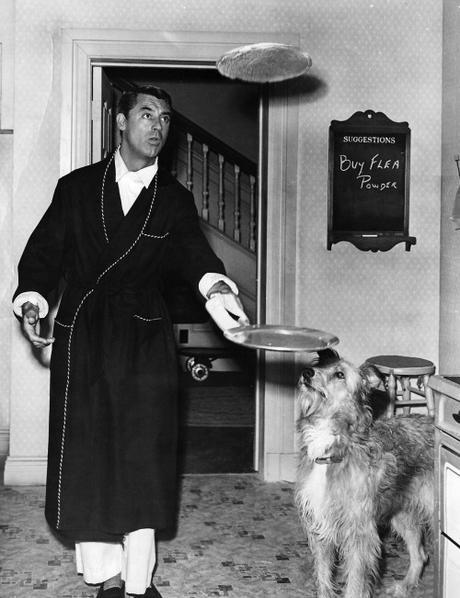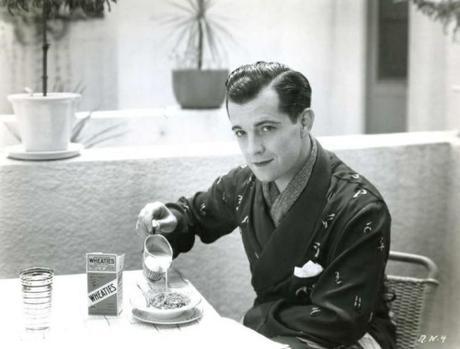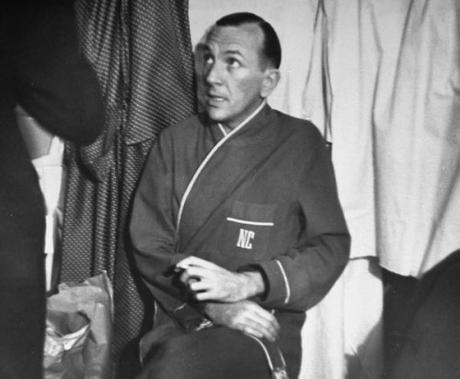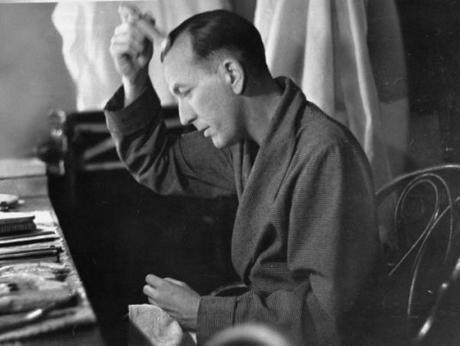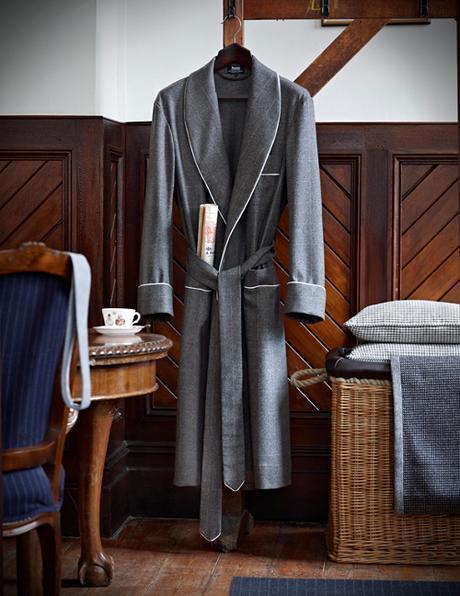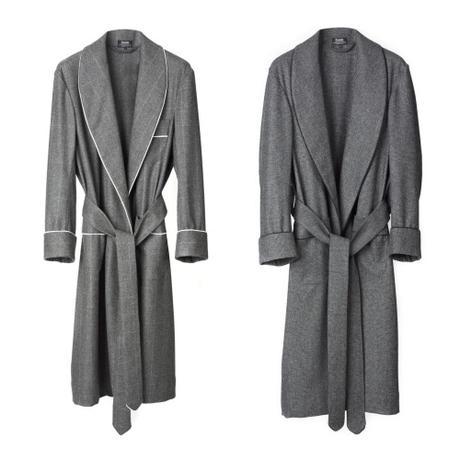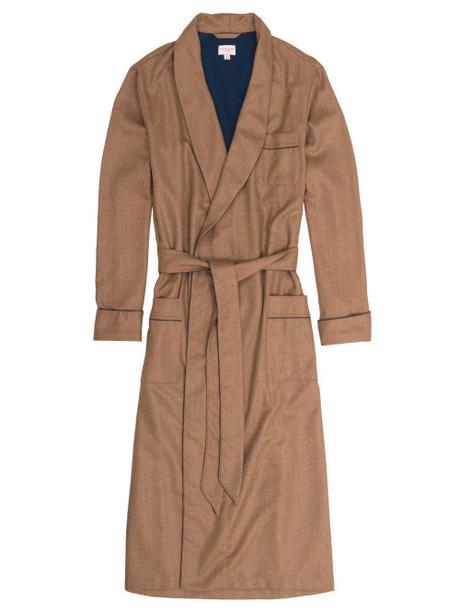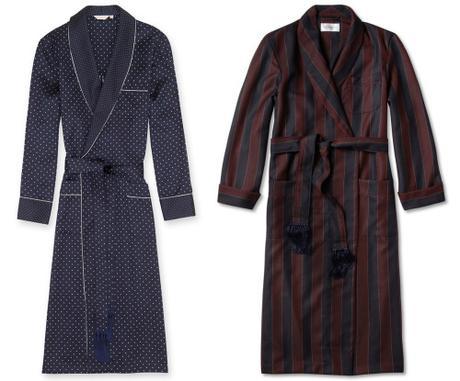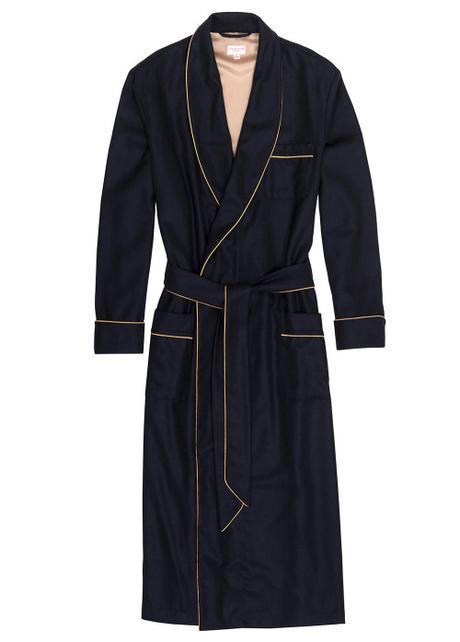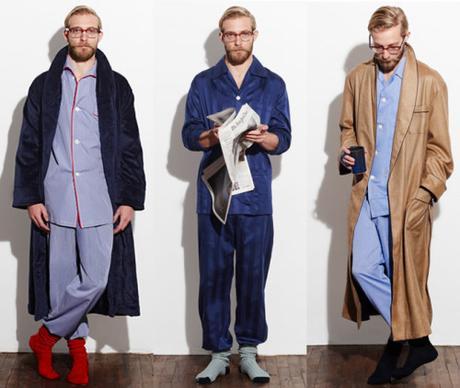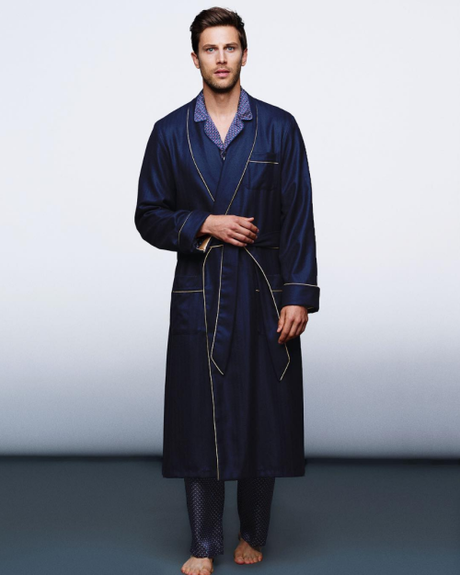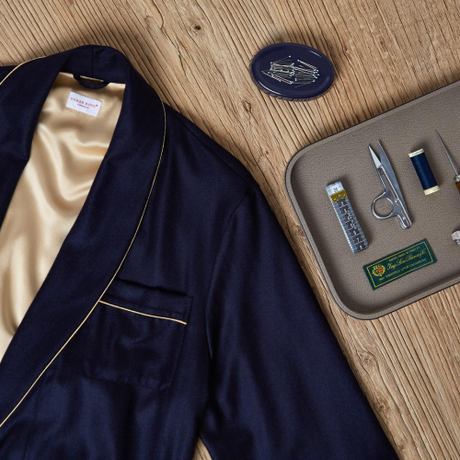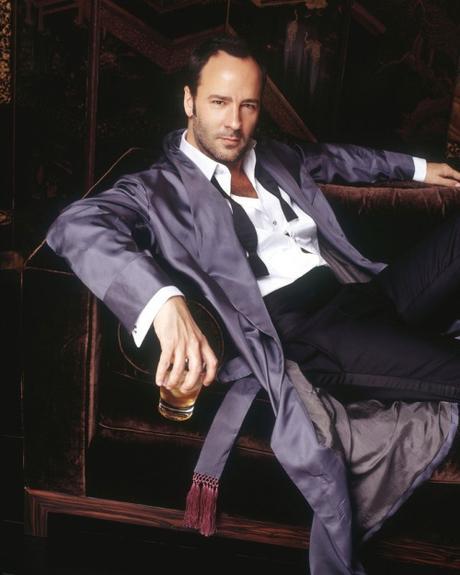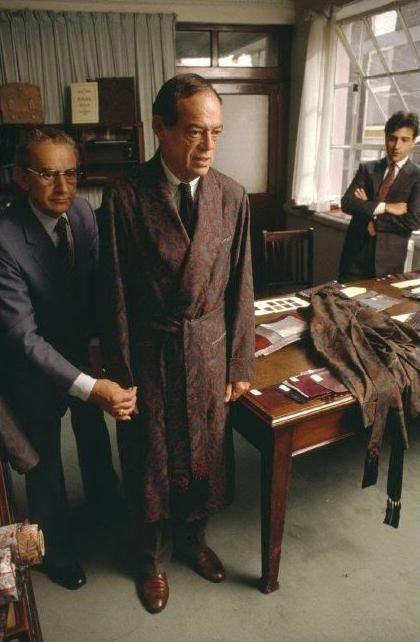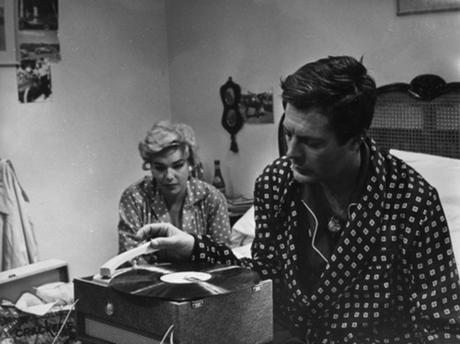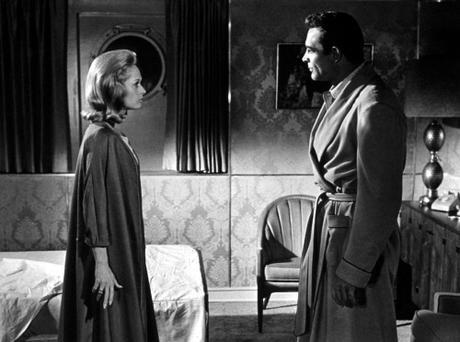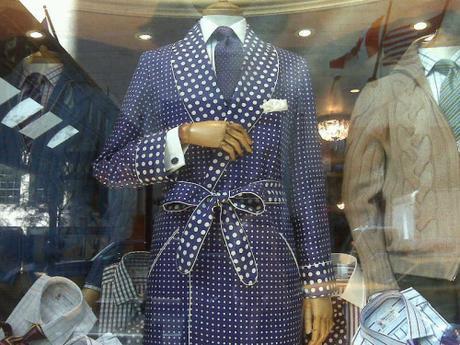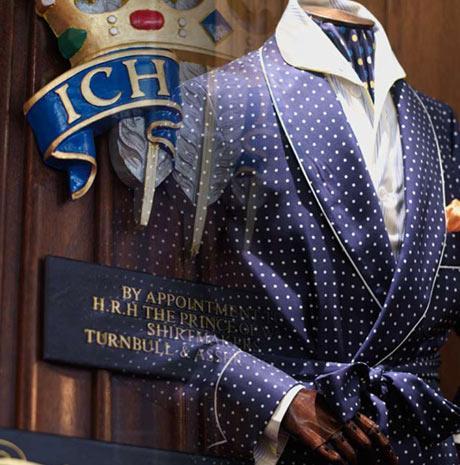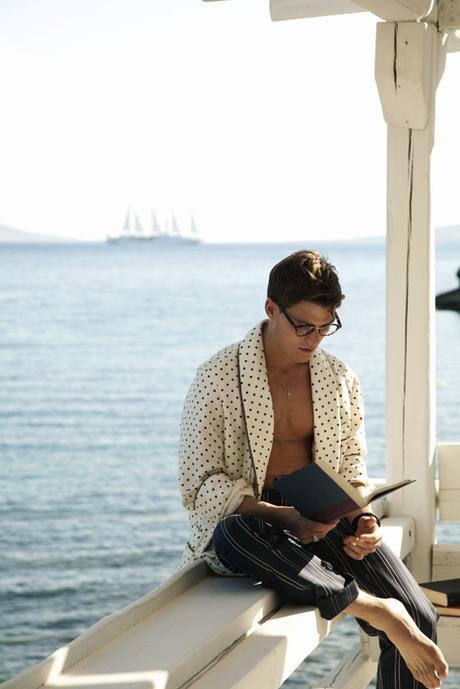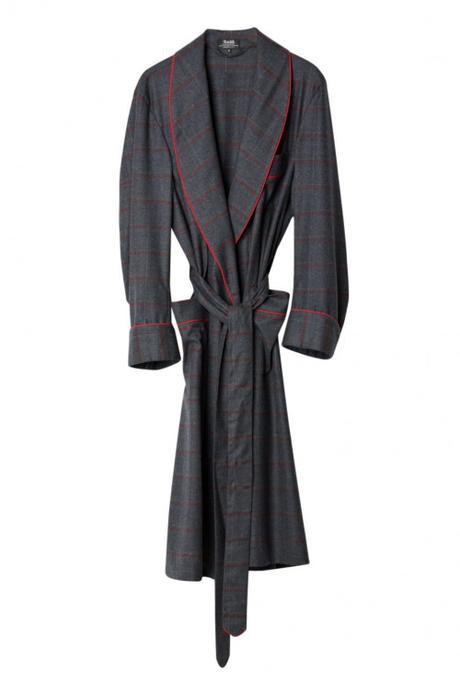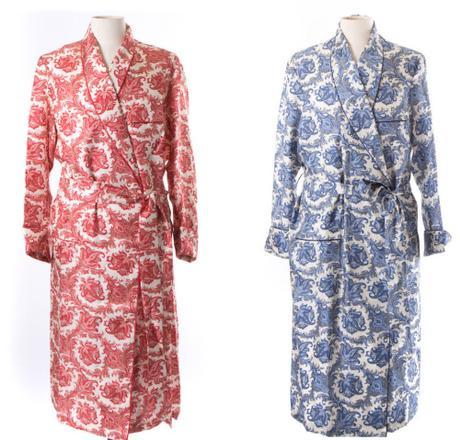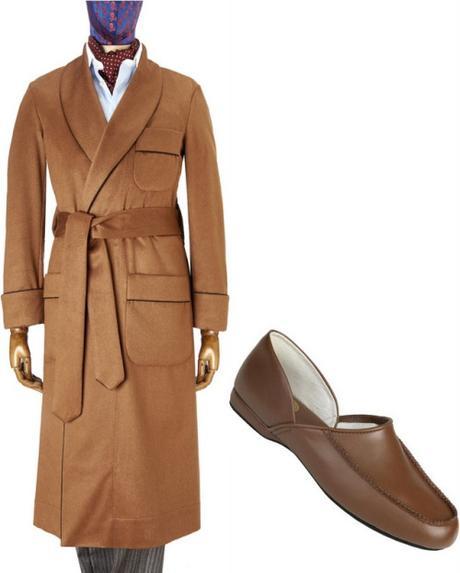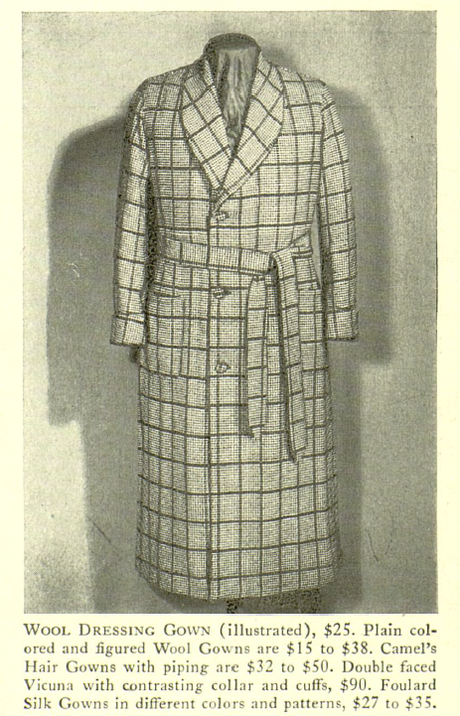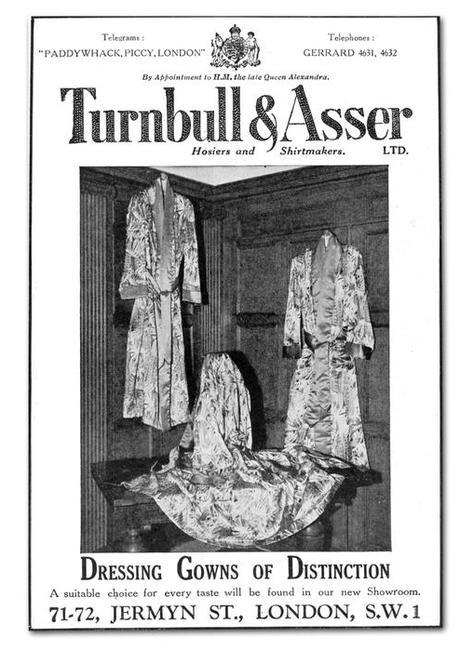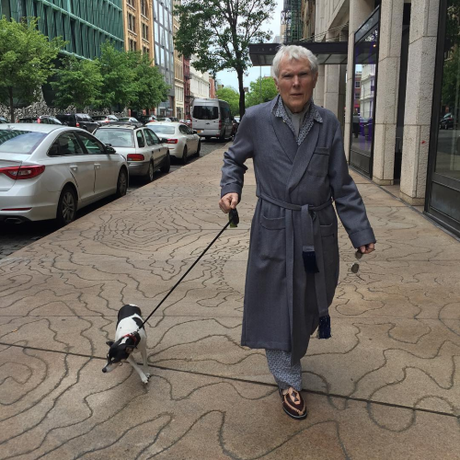
I love this photo of Glenn O’Brien strolling down some NYC street in a dressing gown and woven leather huaraches. Designers have been trying to turn pajamas into glamorous streetwear for the last two or three years, and while I agree with Robin Givhan that you should resist, wearing something like this in the morning while walking your dog just sounds fun.
I bought my first dressing gown last year. It was a bespoke commission from Ascot Chang, with the gown itself made from a length of mid-weight, gray windowpane Fox flannel. It’s great for chilly winter mornings, but a little too heavy for spring and summer. So I’ve since picked up two more – one made from an indigo-dyed Khadi (a kind of handspun, handwoven Indian cotton fabric) and another in a dotted navy silk.
One of the nice things about working with a shirtmaker is that you can often get things made bespoke for not much more than what you’d pay for high-end ready-to-wear. That not only includes dress shirts, but also things made with similar constructions – shirt jackets, pajamas, and dressing gowns. The only exception might be silk gowns, which are apparently better off-the-rack.
There are a few reasons. For one, most tailors have a limited selection of silk. If you can’t find what you need, you’ll have to go to a silk weaver or printer (e.g. Adamley or Vanners). Most of these companies, however, mainly produce for tie brands, which means their silks prints come in big panels – perfect for making ties, but not so great for gowns. I ended up getting this navy dotted silk through Drake’s. Michael Hill, the creative director at the company, was kind enough to send me some swatches of their archival prints, and then have something shipped from one of their weavers. If you buy something ready-made, you can skip this hunting around all together. Dressing gowns are meant to fit a bit loose anyway, so getting something custom is less important.
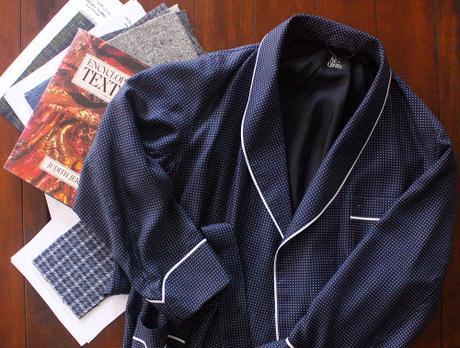
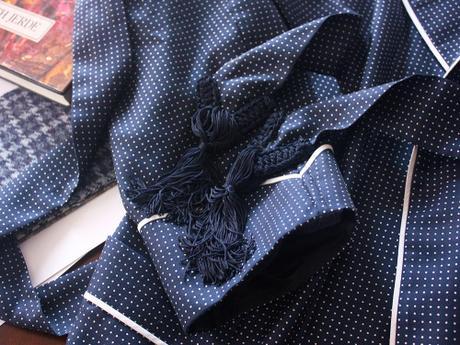
The one advantage of working with a tailor is that you can get hand-knotted tassels. A generation ago, there used to be a small cottage industry across England, where women hand knotted tassels for bespoke shirtmakers, who in turn attached them to dressing gown belts. As gowns have slowly disappeared from men’s wardrobes, however, so have the need for those traditionally-made tassels.
Today’s gowns mostly have machine-stitched tassels, like you see here on this Derek Rose, assuming they have tassels at all. Those perfectly nice, but I wanted the hand knotted ones, so I turned to Budd Shirtmakers – the last tailor in the world who can still supply them. They have one box of hand knotted tassels left, produced for them by a woman who literally just retired last year. Once the box has been gone through, there will be no more.
I don’t know if I wear these as well as Glenn O’Brien, but I love dressing gowns in the morning. They’re admittedly a bit old-fashioned – having originally been designed for men to wear at home when entertaining guests or meeting with their valet. Today, they’re just a nice piece of home comfort. Throw one on when it’s too early to get properly dressed. It’ll keep you warm while you cook scrambled eggs.
If you’re looking for a ready-to-wear gown, check with some of the traditional bespoke shirtmakers, such as Budd, Turnbull & Asser, and Emma Willis. Derek Rose and Zimmerli also have some nice options, and larger “brand” shops such as Brooks Brothers and Ralph Lauren will be more affordable. The cheaper ones will almost always be cotton, which will feel a little less luxurious, but be easier to wash. The Hanger Project, an advertiser on this site, also has some lovely gowns made from necktie silk. If you’re looking for gowns with quilted shawl collars, check Daniel Hanson.

